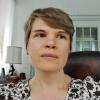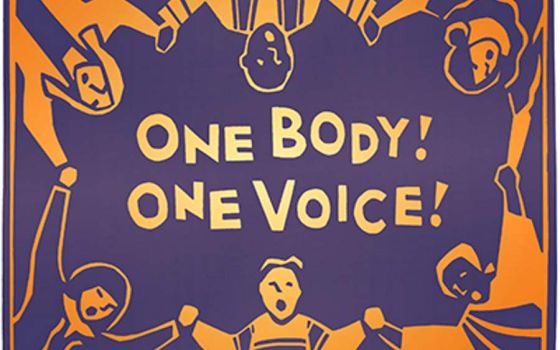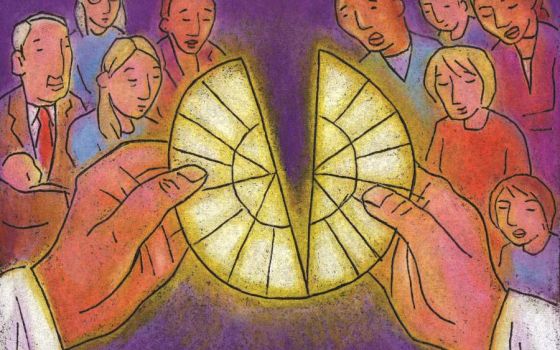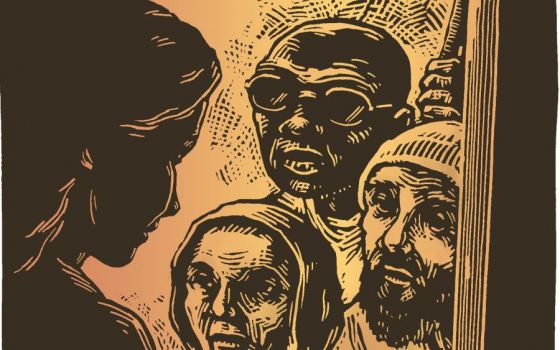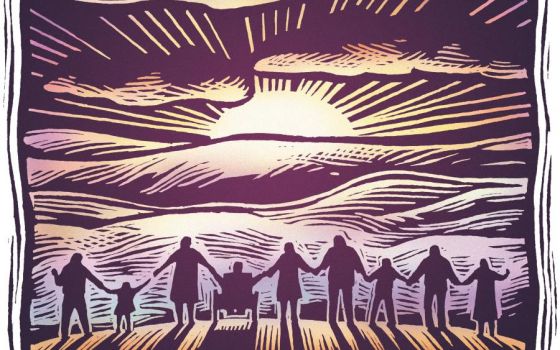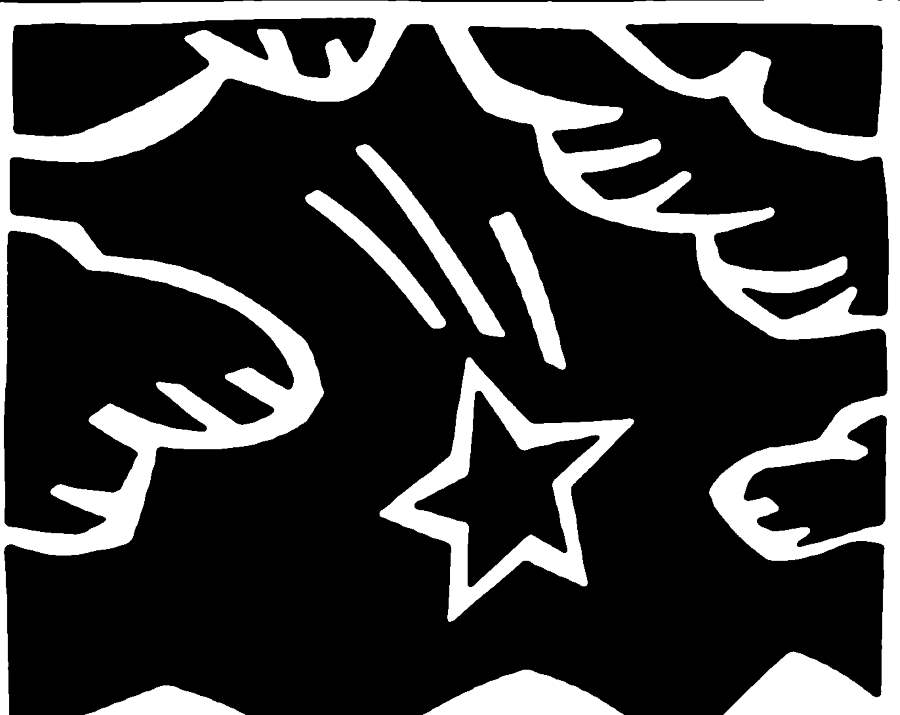
We have art classes for adults at the gallery where I work. Joni, my boss, teaches four oils classes a week, and they're nearly always full.
Her classes are for people at any level of experience. Some students have been painting with Joni every week for more than three years. We also constantly welcome brand-new students, adults who have never before picked up a brush.
Joni gives demonstrations to the whole class, and then walks around helping them with their individual compositions, answering their requests for advice about what to do next. I hear things like: "Well, yellow and purple are complimentary colors, remember, so you want to add a little more purple to this sun, to make it darker." "This part is a bit overworked, but oils are forgiving."
Sometimes, students might stop, thinking: Hey, this looks good enough. If I do anymore, I might ruin it. They ask for the teacher's critique, and she gently suggests, "Maybe the tree could use a couple more branches; you have too much space over here. The composition's out of balance."
And sometimes, paintings don't turn out at all like the ideal that the students envisioned, and they despair: I can't make it work. Should I throw it away? Should I just start over?
At times like these I hear Joni say, "Turn your painting upside down."
Turning the painting upside down is an artist's trick that helps you to focus on what your painting is, not what you meant it to be. It gets you beyond the idea stuck in your mind that you were bent on creating and leads you to see what's actually there. Then, you can adjust your approach to the composition.
Speculative fiction author Ursula K. LeGuin (one of my favorite writers) has a story called "The Eye Altering," in her 1982 collection The Compass Rose, that gets at this same idea. The story is about a group of settlers from Earth who live on a planet they call New Zion. The first generation is now in middle or old age, and their kids, the first children to be born on New Zion, are in their 20s.
Life on New Zion isn't terrible, but the original settlers think it's an ugly place, with a "warty-orange sun" and "repulsive blackish-purple native weeds." After a long day's work, the older folks relax in a communal living room that is lit with artificial Earthlike sunlight, with photos and pictures of the green landscapes they left behind.
One of the younger settlers, a sickly 24-year-old named Genya, paints scenes and landscapes of New Zion — his world. He is quite proud of one particular painting he has done in the hospital, a view of the fields outside his window. To make him feel better, an elder takes it and puts it up in the living room.
Soon the denizens of the living room are wondering where this new picture suddenly came from after 25 years. It has to be France, one says. No, Italy, says another. Either way, it is a scene of "pure, subtle, green and green-gold fields," a "complex and happy painting, a celebration of spring, an act of praise."
Advertisement
It's Genya's painting of New Zion. Under the Earthlike light, they can finally see what he sees, what the new settlers see: their real world; not a memory of a past ideal.
Before Lent began, we read the Creation story from Genesis. This month we encounter it again at the Easter Vigil. "In the beginning," we hear, "the earth was a formless wasteland, and darkness covered the abyss." "Then God said, ‘Let there be light,' and there was light. God saw how good the light was."
Imagine if God had stopped there, after the first day. "That light. I like it. I don't think I'm going to do anymore; it's fine the way it is."Or God could have stopped after "bringing forth vegetation" on the third day, or after the flying creatures or the creeping ones. But God kept on creating.
Once humans entered the picture, the composition changed. And God kept on creating and creating. And when that creation seemed to need a new approach, when people were stuck in their ways, God turned creation upside down.
It happened at Easter, when God died, when Jesus turned death on its head. It happened when Jesus appeared in a locked room, when he sent out his disciples to create a church, a new world, a new way of seeing. It continues to happen as we assemble to celebrate the feasts of Easter and beyond, to all the Sundays and feasts of the year.
Every time we gather for liturgy, we hear a different combination of stories and music and preaching. Every time we gather, we are different people. Each liturgy is a brushstroke of the kingdom.
Editor's note: This reflection was originally published in the April 2015 issue of Celebration. Sign up to receive daily Easter reflections.
